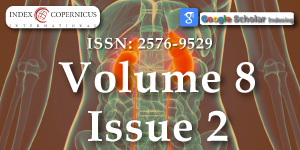Bridging the Gap: Challenges and Solutions in Online Nephrology Education
Main Article Content
Abstract
The outbreak of COVID-19 has created an unprecedented situation that has accelerated online education in areas like nephrology, which are traditionally served by onsite training. Efforts to educate clinicians remotely provide convenience and flexibility but may leave many open questions when it comes to how well-trained professionals maybe after completing their programs online. This review paper has emphasized the deleterious effects of online nephrology education and identified a number of ways in which it can be problematic such as lack of hands-on training, less patient interface, lack of proper supervision, and inconsistent quality of programs. The ability to make a difference, however, is further restricted by technological barriers and resource constraints. Whilst these programs tend to focus on creating knowledgeable graduates, they often fail to provide the clinical exposure necessary for preparedness. Hybrid programs - which combine online courses with clinical training in person are required to deliver high-quality nephrology care.
Article Details
Copyright (c) 2024 Habli MM, et al.

This work is licensed under a Creative Commons Attribution 4.0 International License.
Mishra L, Gupta T, Shree A. Online teaching-learning in higher education during lockdown period of COVID-19 pandemic. Int J Educ Res Open. 2020; 1:100012. doi: 10.1016/j.ijedro.2020.100012. Epub 2020 Sep 10. PMID: 35059663; PMCID: PMC7832355.
Agarwal S, Kaushik JS. Student's Perception of Online Learning during COVID Pandemic. Indian J Pediatr. 2020 Jul; 87(7):554. doi: 10.1007/s12098-020-03327-7. Epub 2020 May 8. PMID: 32385779; PMCID: PMC7205599.
University of South Wales. Online MSc in Renal Medicine. University of South Wales. 2024.
American Society of Nephrology (ASN). https://www.asn-online.org
International Society of Nephrology (ISN). https://www.theisn.org
Statista. https://www.statista.com
Quality Assurance Agency for Higher Education (QAA). https://www.qaa.ac.uk
Health Education England (HEE). https://www.hee.nhs.uk
British Renal Society (BRS). https://britishrenal.org
European Accreditation Council for Continuing Medical Education (EACCME). https://www.uems.eu
Higher Education Funding Council for Wales (HEFCW). https://www.hefcw.ac.uk
Dhillon RS, Monteiro S, Tannouri A, et al. The impact of COVID-19 on medical education. J Med Educ. 2020; 34(2):100-110.
Brown J, Smith C, Davis L. Online learning in nephrology: opportunities and challenges. Kidney Int. 2021; 99(5):1013-1018.
Jones R, Patel V. Innovations in online medical education. Med Educ. 2020; 54(12):1184-1192.
Chen H, Chen M, Wang Q. Practical skills training in nephrology: challenges in online education. Nephrol Dial Transplant. 2021; 36(9):1671-1677.
Harris D, Balwinder S, Thaker D. Simulation in nephrology education: an evolving tool. Kidney360. 2022; 3(3):467-474.
Liu Q, Lu L. Bridging the gap in nephrology education: online and offline integration. Am J Nephrol. 2022;45(4):312-321.
Zuckerman A, Ronis T. Challenges of remote nephrology training. Clin Kidney J. 2021; 14(2):484-490.
Patel S, Duffy K, Green M. Enhancing clinical acumen through direct patient care. Adv Nephrol. 2021; 25(3):202-211.
Singh P, Raj K, Mital S. The importance of patient interaction in nephrology training. Nephrol News Issues. 2022; 36(6):22-27.
Cohen A, Tan Y, Smith J. Building rapport in nephrology practice: the role of face-to-face interactions. Clin Nephrol. 2021; 95(5):259-264.
Roberts M, Chang A. Mentorship in nephrology: a key to professional growth. J Ren Care. 2022; 48(1):14-20.
Ahmed S, Brown T. Feedback mechanisms in online nephrology education. BMC Med Educ. 2021; 21(1):312.
Wang Y, Zhang Q. Variability in the quality of online nephrology programs. J Nephrol. 2020; 33(4):765-772.
Nelson A, Lee J. Accreditation and standards in online medical education. Med Educ Online. 2021; 26(1):189-197.
Thomas J, Williams H. Certification challenges for online nephrology graduates. Nephrol Ther. 2021; 27(3):129-136.
Martinez S, Jackson K. Technological barriers in online medical education. Educ Sci. 2021; 11(2):45.
Patel M, Gupta R. Resource constraints in online nephrology training. J Clin Med. 2021; 10(8):1638.
Liu Q, Lu L. Bridging the gap in nephrology education: online and offline integration. Am J Nephrol. 2022; 45(4):312-321.





